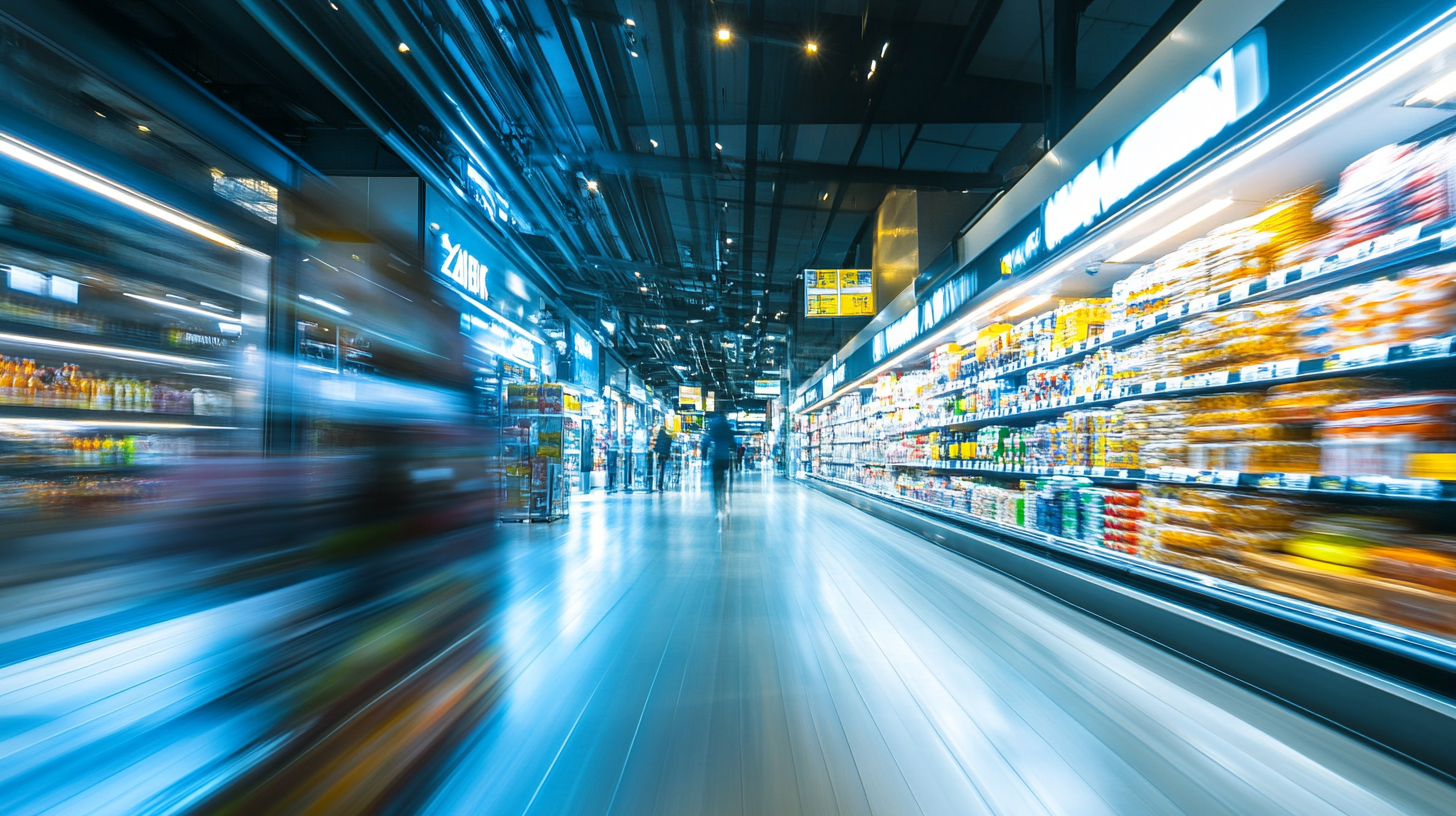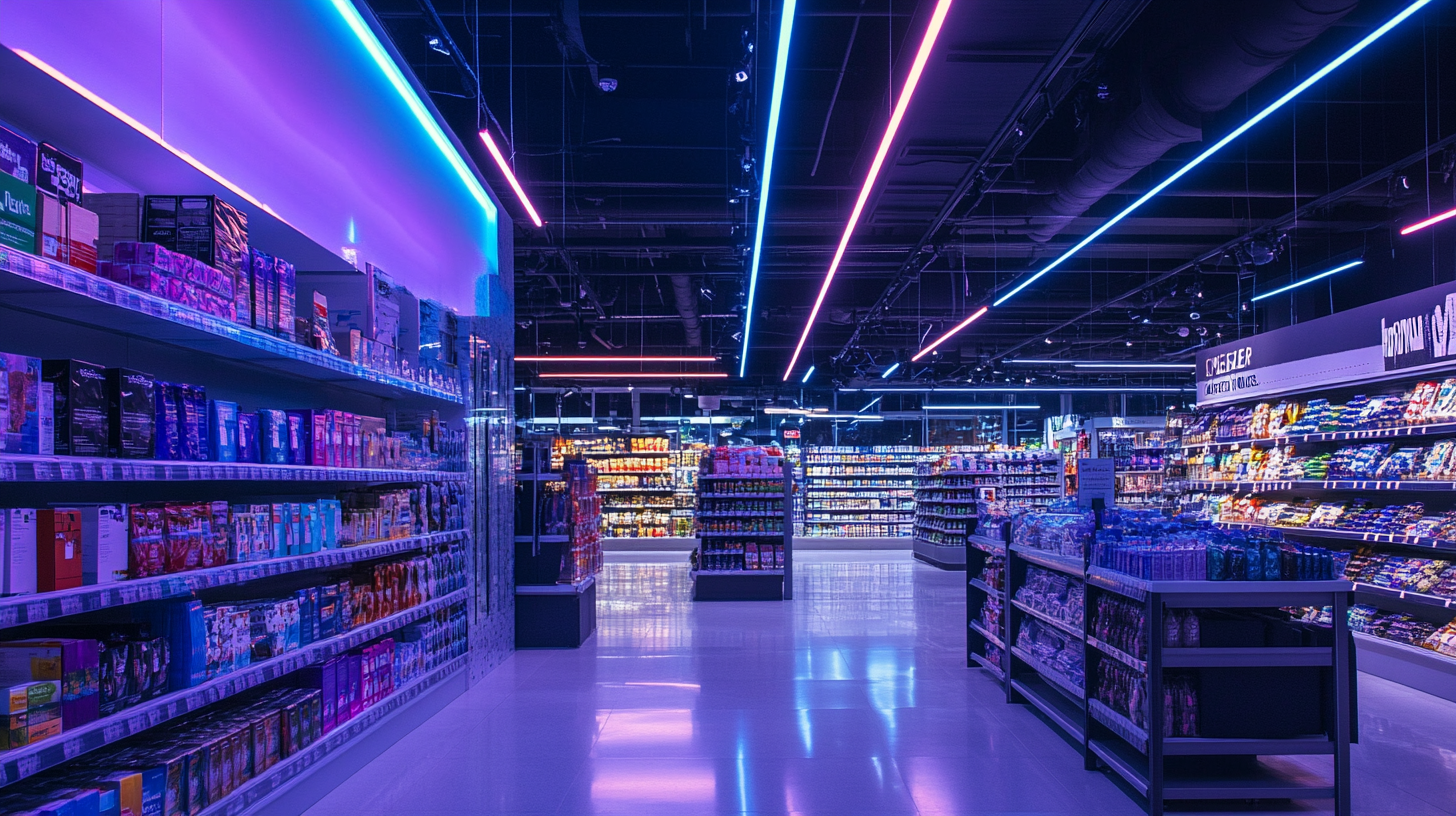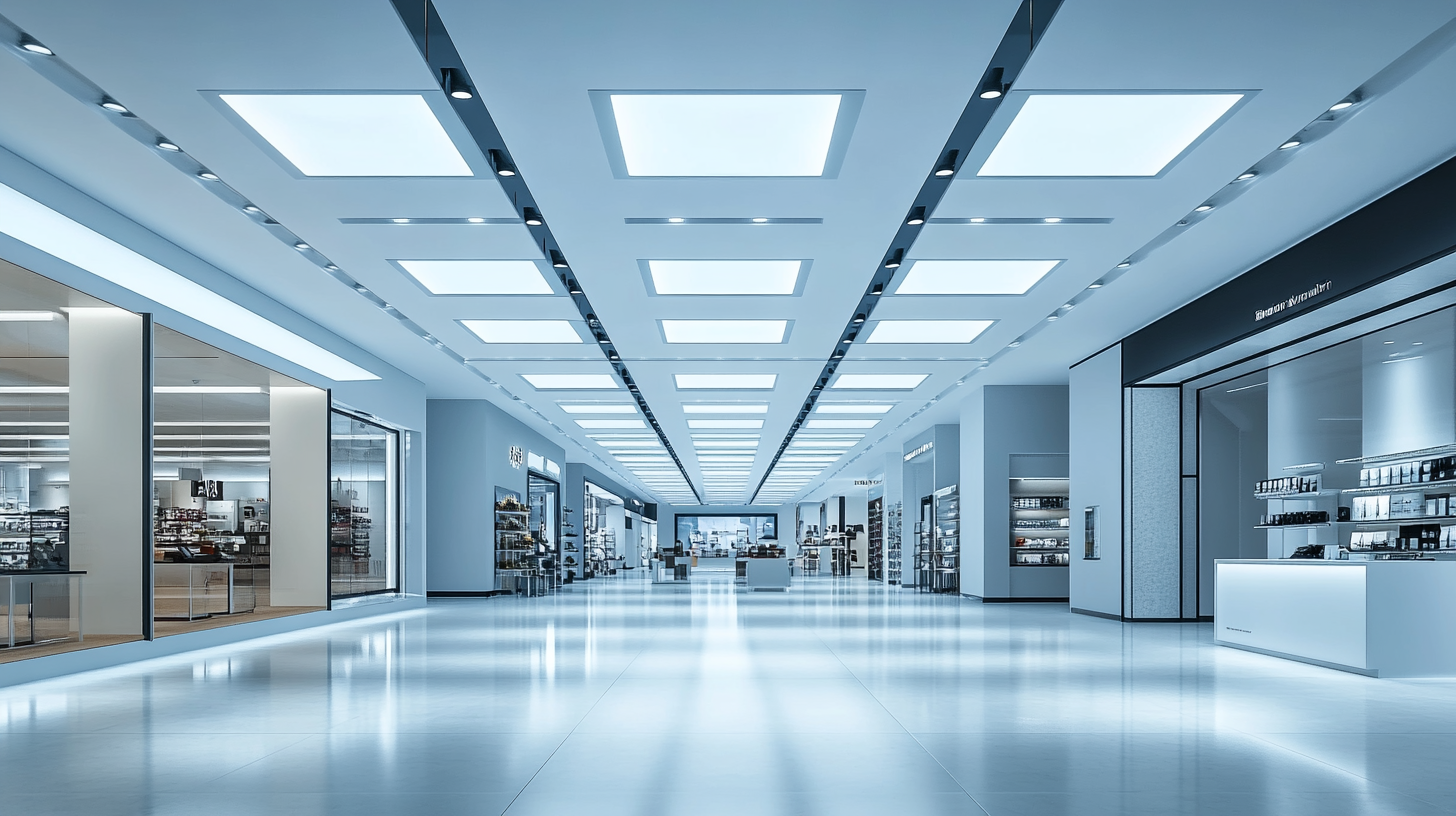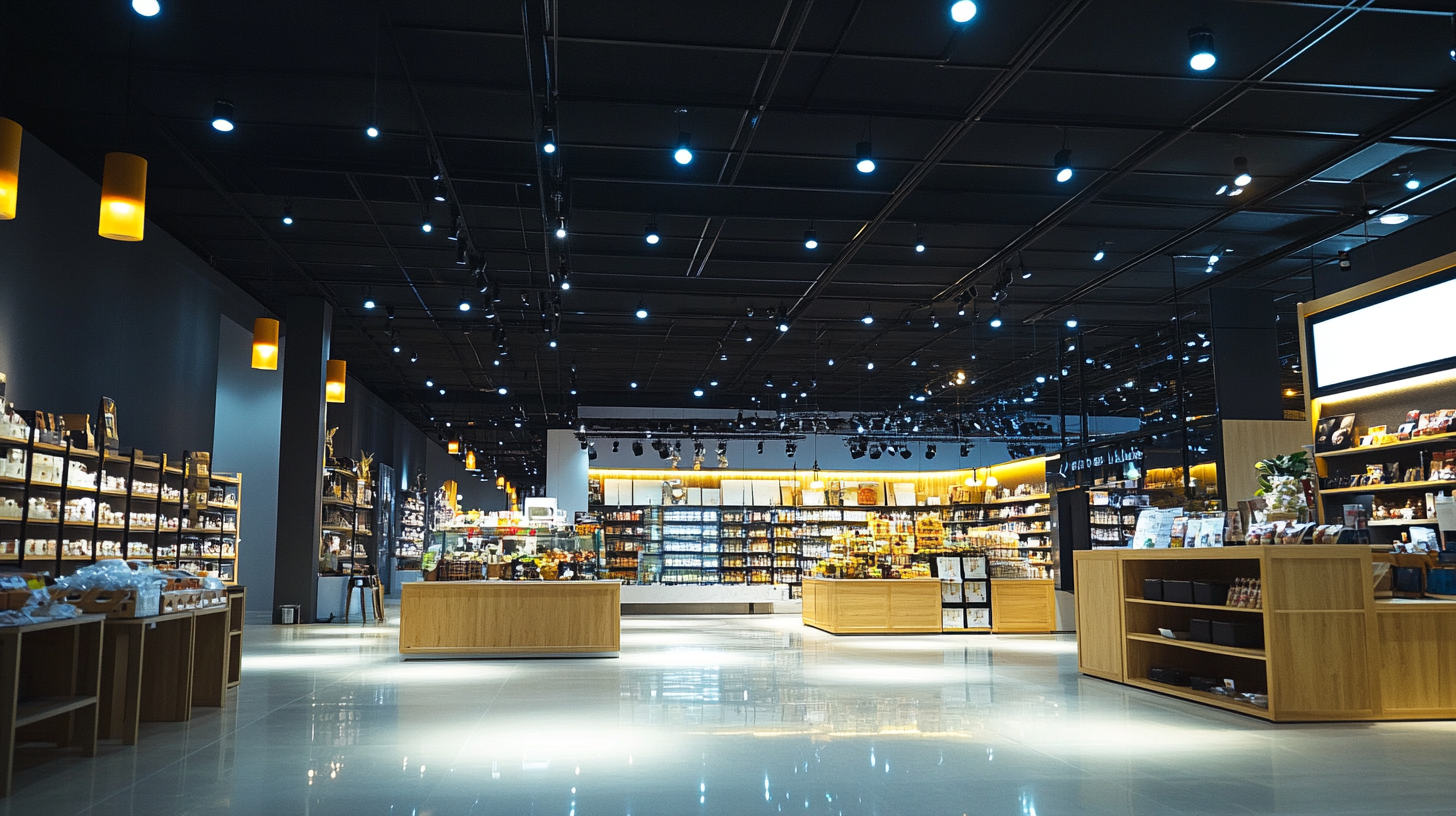Exploring Smart Lighting Solutions in Retail Applications for Enhanced Energy Efficiency
As the retail sector continues to pursue fresh approaches toward improved customer experience and operational efficacy, smart lighting forms an increasingly relevant part of this equation. Recently, a study from American Council for an Energy-Efficient Economy noted that up to approximately 60% savings could be realised for retail stores through a switch from existing to LED technologies with some smart lighting interventions that would not necessarily be part of the existing provisions. But more than low electricity bills, these also invite visitors into their retail places. More and more retailers consider having good lighting to actually influence sales; a survey by the Lighting Research Center showed that by lighting products properly, the products' value-perceived increased by 20%.
In any case, installing smart or intelligent lighting is not merely energy efficient, but it is the very essence of making a green future. LED lighting contributes toward the whole objective of less energy consumption in commercial buildings, which account for about 20% of all U.S. energy consuming, according to the U.S. Department of Energy. With such systems, smart lighting solutions can not merely be used for retail, but they can also create a balance between energy consumption savings and the betterment of the consumer shopping experience.

Importance of Smart Lighting in Retail Environments
Lighting is one of the few essential facilities in retail buildings. Indeed, smart lighting is the penultimate thing that can augment energy efficiency and customer experience in retail environments. Lighting accounts for up to 30% of a typical retail store's electricity consumption, according to the report from the U.S. Department of Energy. Smart lighting solutions can save up to 50% of energy expenditures on lighting, leading to a large saving in operational expenses. The smart LED control will not only ensure the proper usage of energy but will also create a better setting for the customer's involvement experience. Smart lighting will not only enable utilities efficiency; it will contribute much to the ambience hence keeping consumers healthy during shopping. According to the International Energy Agency, proper lighting will enhance mood, increase available shopping time, and add to the goods identified for sales. For example, dynamic lighting systems adjust at different times of the day or flow depending on customer movement. In fact, according to a report taken from Research and Markets, sales using an advanced lighting approach increased by 20%. Moreover, Intelligent Lighting allows for better sensor data collection that can analyze foot traffic and consumer behavior over time. All this information can improve layouts and marketing while multiplying the savings generated from energy-efficient lighting. Smart lighting solutions are no longer just upgrades as the retail industry transitions-they are now between strategic necessities for retailers with regards to energy consumption and better customer experiences within the shopping environment.

Innovative Technologies Driving Smart Lighting Solutions
Being a very fast-changing industry, retail has been treating newer technologies to make energies more efficient with smart lighting solutions. Retail places are utilizing technologically advanced systems not only to render an appealing look to stores but also to maximize energy use. The application of sensors and IoT connectivity has been at the heart of this transition, combining real-time adaptation of lighting systems to environmental and customer behavioral changes.
The installations closest to state-of-art in smart lighting use occupancy sensors and day-lighting harvesting technologies. Each one concerns dimming and brightening the lights in some way, either from customer presence—from some kind of space sensors, such as people-counting sensors—or from the amount of natural light entering the exit with the conscious aim of energy efficiency. So, this one really shows the potential for energy efficiency. Another way that smart lighting really can berspoon is by basically letting the lights change ambiance for different times of the day and for various promotions, thereby improving the shopping mood while saving energy.
In addition, data analytics play entire roles in the surveillance of smart lighting solutions. Retailers can study foot traffic and change their lighting system, ensuring it is as bright as necessary when needed. This smart approach offers cost savings on operations and also supports its ambitions for becoming a sustainable market, making retail locations friendlier to the planet. In the foreseeable future, with advancements in technology, the retail lighting design solutions will introduce newer innovations that will re-synchronize energy efficiency with consumer interaction.

Benefits of Enhanced Energy Efficiency in Retail Spaces
Improving energy efficiency in retail spaces is emerging as a major focus as businesses try to pull down their operational costs and establish sustainability measures. The U.S. Department of Energy estimates that lighting consumes around 30% of all the energy utilized in a retail store. Smart lighting solutions enable retailers to optimize the energy consumption of their stores and create more savings. It is reported that retailers using advanced lighting controls cut energy consumption by up to 50%, thus working to enhance functionality and atmosphere.
Moreover, cycled lighting systems are designed to allow retailers to customize their lighting according to the individual needs of different areas across the store. McKinsey research indicates that through Cycled lighting conditions in accordance with customer traffic patterns, retailers can create an improved shopping experience at reduced energy expenditure. For example, stores may use additional bright lighting during peak hours to entice customers, coupled with adaptive dimming in less-trafficked areas to save energy.
Meanwhile, greater energy efficiency serves to enhance the bottom line but is also an important component of corporate social responsibility. Retailers who opt to have energy-efficient lighting can markedly decrease their carbon footprints. The Carbon Trust calculates that energy-efficient lighting would stave off 60% of greenhouse gas emissions, balancing the needs of business with regulatory requirements while improving its reputation among sorting consumers from green to environmentally savvy.

Case Studies: Successful Implementations of Smart Lighting
Smart lighting solutions are being increasingly implemented in retail settings, especially with so many companies coming together to explore the potential of new technologies. Recently, a consortium of 13 lighting companies declared a partnership for the development of smart lighting applications using advanced modules in making energy efficiency and customer experience improvements. This collaborative effort of established brands to foster development is reflective of a commitment within the industry to integrate smart technologies into retail environments.
Smart lighting positively affects energy efficiency and operating costs, as indicated by many case studies. A prominent retail chain, for example, adopting advanced lighting systems has reported energy cutbacks of about 30% in their stores. This type of improvement lowers utility expenditures and increases the overall shopping experience through dynamic lighting that adjusts according to consumer behavior. Reports estimate that the smart lighting industry will grow at a CAGR of 20% over the next few years, thanks to increasing demand for energy-efficient solutions and the growth of smart retail projects.
Recent developments in wireless technologies have provided smarter lighting control systems. The availability of low-power, high-load mechanisms for retail applications was due to collaboration engaged in by technology providers. While enhanced by energy efficiency, these systems provide data visibility to customer preferences and behavior, thus acting as collaborators with the retailers in achieving personalized shopping while cutting on operational costs, which has underpinned the push for smart lighting in retail.
Future Trends in Smart Lighting for Retail Applications
Smart lighting has arrived, and with it are energy savings and a whole new level of immersive shopping experiences. The future of smart lighting envisions systems more integrated and adapted to changes in environmental conditions and consumer behaviour. The development of sensors and smart controls will allow retailers to automate the buildup of lighting levels based on foot traffic and time of day.
The integration of IoT technology with lighting systems represents one of the most exciting advances. With IoT, lighting systems can provide real-time data collection and analysis to let retailers know peak shopping times and areas of higher customer engagement. In this way, smart lighting can communicate to change brightness or color temperature to create a welcoming ambience that enhances product visibility and encourages buying decisions. Together with energy-efficient LED technologies, these systems bring down operational costs and, at the same time, contribute to sustainability, thus keeping in mind the ever-growing consumer demand for eco-friendly practices.
In addition, smart lighting for retail stands to benefit from greater personalization functionality in the future. Thanks to continued developments in AI, retail stores may one day tailor the shopping experience to their individual shoppers by manipulating the lighting according to their preferences and actions. This exceeds satisfaction, promotes loyalty, and overtime, increasingly leads return customers. All these considerations will be critical as the retail environment continues to advance in ways that make the adoption of smart lighting solutions indispensable for those businesses seeking to keep the edge over their competitors in this energy-efficient shopping ambience.
Quality Commercial LED Lighting specializing in LED Tubes, LED Bulbs, LED Troffers, LED Door Kits, LED Retrofit Kits, LED Panels, LED Spot Lights, LED Wall Packs, LED Lamps, LED Drivers, LED Accessories, LED Lights, LED Sales, and LED Manufacturing. Headquartered in Atlanta, Georgia, USA.
